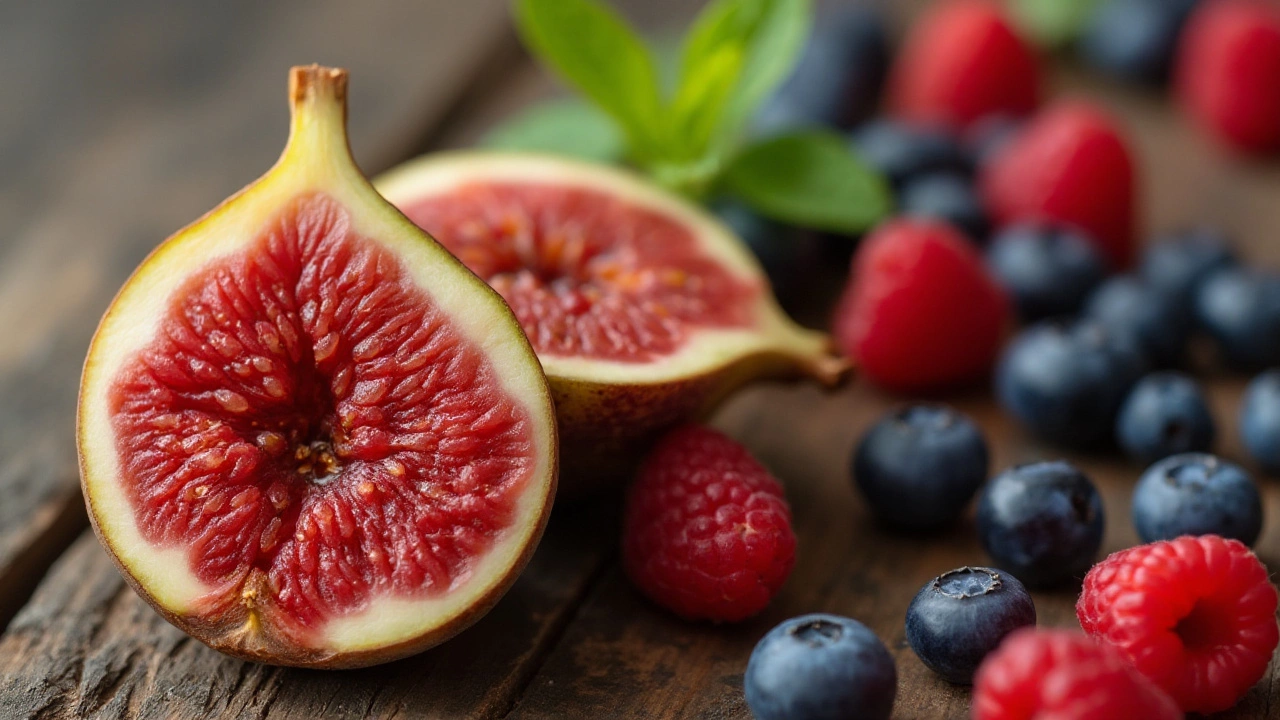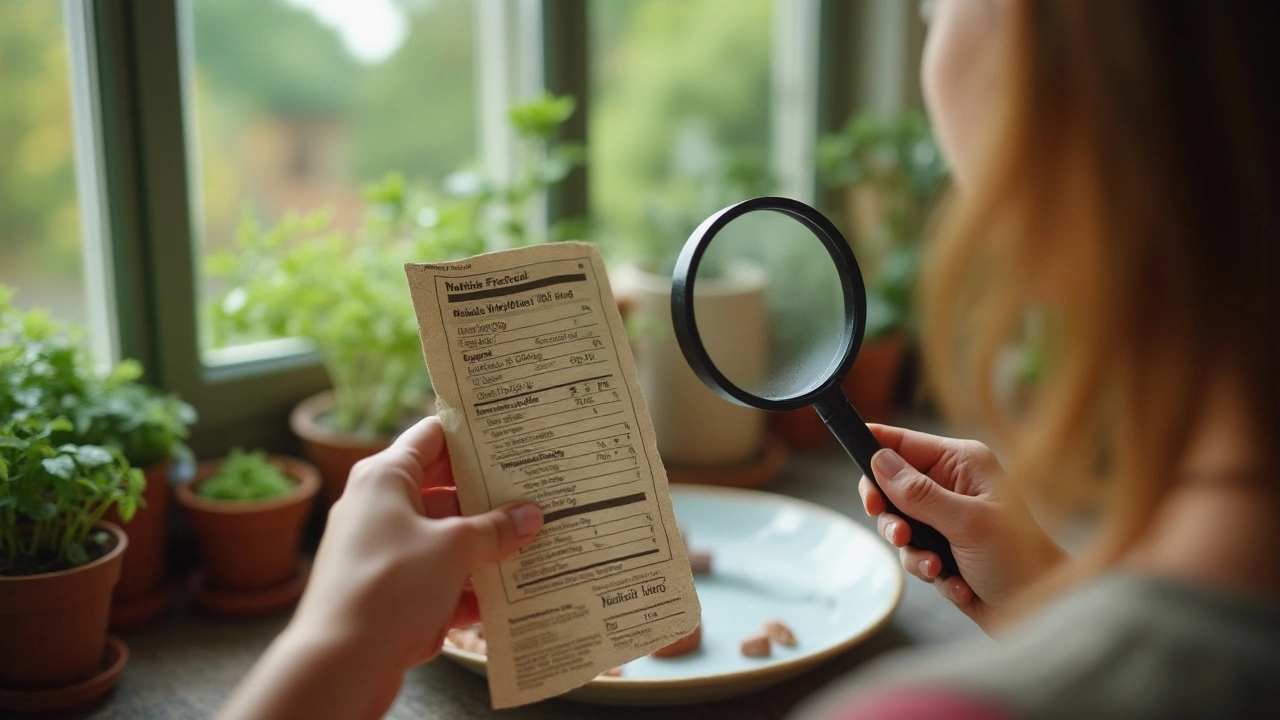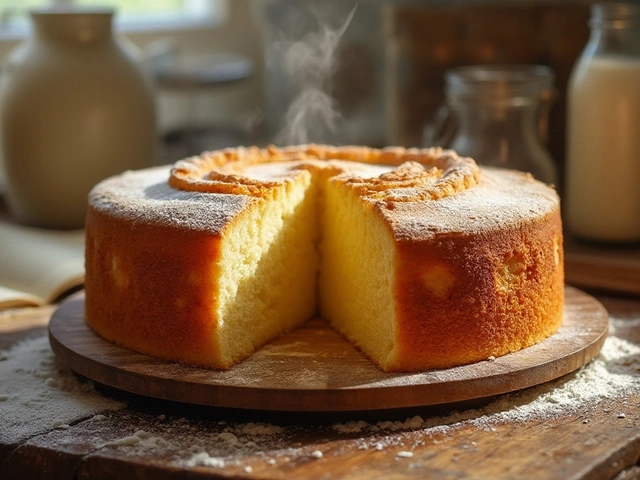Figs are a delicious fruit with a complex and fascinating life cycle. For those exploring veganism, figs present an unexpected quandary. Are figs truly vegan? It's a question that stirs debate even among the most knowledgeable. This discussion often hinges on the intricate relationship between figs and wasps, leading some vegans to eschew the fruit in favor of alternatives.
Understanding why figs are sometimes excluded from a vegan diet requires a closer look at their natural pollination process. This article delves into the heart of this matter, as well as explores delightful alternatives for eco-conscious eaters who wish to enjoy plant-based desserts without ethical compromise.
- The Unique Pollination of Figs
- Why Figs May Not Be Vegan
- Ethical Considerations for Vegans
- Vegan-Friendly Alternatives to Figs
- Delicious Fig-Free Vegan Desserts
The Unique Pollination of Figs
The life of a fig is a symphony composed by nature itself, where every note depends on the peculiar relationship between the fruit and tiny wasps. This dependence isn't just a matter of preference; it's a necessity for the survival of many fig species. While plants typically rely on bees or the wind to spread pollen, figs have developed a special bond with the fig wasp, a relationship that dates back millions of years. Each fig species has a co-dependent wasp species that is intricately synchronized with its life cycle.
Here's how it all works: the female wasp enters the fig fruit through a small opening called an ostiole. In this act of intrusion, she brings along pollen from another fig that she visited earlier. Inside the fig, she lays her eggs and, in a fascinating twist, the fig provides a nurturing environment where her larvae develop. As these larvae grow, they eventually become adult wasps and emerge from the fig, covered in pollen, to continue the cycle. At this stage, lilting in an embrace with nature's dramaturgy, one must marvel not just at the biology but the poetry of it all. Despite the perceived loss of life, figs often allow wasps to exit before maturity, speaking a silent communication of coexistence.
A common misconception is that every fig you eat contains the remains of a wasp. In truth, by the time the fruit ripens, the fig's enzymes have typically broken down and absorbed the wasp's body. It's a nuanced dance, encapsulating life, death, and rebirth, all hidden within the flesh of a simple fruit. This fascinating pollination process is a testament to nature's ingenuity and has sparked curiosity and debate among scientists and vegans alike. Some may argue figs are nature's way of showing us a successful alliance between species, while others may see them as a dilemma for veganism.
Carl Linnaeus once marveled at nature's symbiotic designs, stating, "Nature does not proceed by leaps and bounds." Indeed, the fig and wasp illustration stands as a witness to this truth.
Despite the oddity of their relationship, or perhaps because of it, figs have been revered throughout history. They have been symbols of fertility, prosperity, and even the focus of spiritual and cultural lore. The idea that such a small insect could influence human food choices centuries later is a testament to the intricacies of the natural world. Understanding the fig's pollination is key to appreciating its role in both our culinary and ethical conversations. And while this process may seem like a marvel to some, it's a reminder to others of the ethical boundaries and choices inherent in a vegan lifestyle.
Why Figs May Not Be Vegan
In the magical dance of nature, figs stand out for their unique method of reproduction, one that intertwines their fate with that of small pollinating wasps. The symbiosis between figs and wasps has sparked debate among vegans regarding the suitability of including figs in their diet. To appreciate why figs may not be vegan, it's essential to look closely at the fig pollination process. Female wasps enter the fig through a small opening called the ostiole, where they lay their eggs. Unfortunately, in some figs, this entrance can be a one-way ticket, leading to the wasp's demise inside the fruit.
Over time, the wasp's body is broken down by an enzyme common in figs, such as Ficin, leaving no recognizable parts. This natural decomposition process is part of the fig's ripening phase, yet the presence of wasp remains, albeit in traces, leads to ethical queries. Does the demise of these insects mean that figs aren't fit for a vegan diet? "Animal welfare and consciousness form the backbone of vegan principles," explains Dr. Marianne Stevens, an ethologist who studies plant-animal interactions. "The unintentional involvement of insects poses a moral inconsistency for some vegans."
The debate grows as some argue that since the process is natural and necessary for fruit development, it doesn't contravene vegan standards. Others point out that veganism, in its essence, seeks to avoid harm to living creatures, including insects. It leads us to an intriguing division within the community: Should the small reward of enjoying tasty figs be worth the potential compromise of values? As veganism grows in popularity, these philosophical debates become even more relevant, pressing individuals to define their boundaries. To aid in decision-making, one might consider exploring fig alternatives from figs that do not rely on wasp pollination methods.
It is noteworthy that not all fig varieties use wasp pollination, with some cultivated versions being self-pollinating or pollinated by other means. This distinction emphasizes the importance of knowing one's food sources. A chance to dive deeper into this distinction and navigate the complexity of food origins is an important step for many considering the ethical ramifications of their plate choices. The best approach combines an understanding of agricultural practices and the nuances of individual consumption ethics. Whether or not to include figs in a vegan diet is, ultimately, a personal choice that reflects each vegan's philosophy and understanding of the food ecosystem they wish to support.

Ethical Considerations for Vegans
For those devoted to a vegan lifestyle, the concept often extends beyond dietary choices. It encompasses a holistic approach to ethics and living harmoniously with the planet and its inhabitants. The case of figs presents an intriguing ethical puzzle. At first glance, figs appear to be a plant like any other, ripe and ready for consumption without any direct animal exploitation involved. However, a deeper dive into the fig's life cycle reveals a more intricate link with the animal kingdom, specifically through its unique relationship with wasps, which can challenge the foundational principles of veganism.
The fig tree's reproduction process is a fascinating symbiotic relationship where a particular species of wasp, aptly named the fig wasp, plays a crucial role. These wasps enter the tiny opening of the fig some incorrectly assume to be an eye but is in reality an ostiole. Inside, they pollinate the inner flowers while laying their eggs. The wasps eventually die and are absorbed by the fruit using enzymes to break down the remains, transforming them into proteins. For many vegans, this lifecycle raises ethical questions about consumption. While no conscious harm is inflicted upon the wasps, the fact that the wasp's life cycle is completed within the fig leads some to consider the fruit as indirectly involving animal exploitation.
The distinction often lies in personal philosophy. Some vegans adhere strictly to avoiding any form of animal interaction, while others embrace a more pragmatic approach, accepting that nature's intricate methods sometimes intertwine the plant and animal kingdoms. This dichotomy reflects broader ethical considerations within veganism. Some people might argue that the natural and mutually beneficial relationship between figs and wasps does not constitute exploitation in traditional terms, while others consider any unavoidable animal interaction as a deviation from vegan principles.
As ethical debates become more nuanced, it becomes pivotal for individuals to inform themselves about natural processes and supply chains. Understanding the origin of their food allows concerned vegans to make informed decisions that align with their personal values. It may lead to the search for vegan-friendly alternatives or, conversely, a reassessment of where one draws the line in defining what constitutes an acceptable ethical compromise in the modern food landscape. Some who adhere to a stricter line on what constitutes vegan might choose to seek out brands or varieties of figs that are certified as free from animal interaction, though such certification can be hard to come by.
"Our choices are increasingly informed by a deeper understanding of nature's balance and our desire to live ethically within it," remarks Dr. Emma Brook, an expert in sustainable agriculture. "This awareness shouldn't deter us but rather empower us to redefine consumption in ways that honor both our principles and the planet."However, the question remains complex, and the resolution differs personally. Ultimately, addressing the ethical considerations of veganism regarding figs—or any similar dilemma—requires a nuanced understanding of both nature's intricacies and one's values. Balancing these influences is a continuous dialogue between knowledge and ethics, one that every vegan must navigate on their own terms.
Vegan-Friendly Alternatives to Figs
For those committed to a plant-based lifestyle, finding vegan-friendly alternatives to figs can be a delightful pursuit. While figs themselves deliver a unique sweetness and chewy texture due to their intricate relationship with wasps, many equally enticing options suit both culinary creativity and ethical considerations. As the vegan culinary world expands, the need for alternative ingredients that satisfy both the palate and principles has never been greater.
A classic substitute for those seeking the rich, sugary essence figs offer is the humble date. Known for its syrupy sweetness and versatile uses, dates can transform any dish with their distinctive flavor profile. Whether in baking, blended into smoothies, or chopped into salads, dates provide not just sweetness but also a nutritional punch with their high fiber and antioxidant content. Another worthy contender is the persimmon, particularly the Fuyu or Hachiya varieties. These fruits bring a bright, honey-like sweetness similar to figs, with a lush texture that can enhance any dessert from puddings to pies.
For those missing the slight crunch of fig seeds, chia seeds offer a delightful alternative. Not only do they mimic the texture, but they come packed with a host of nutrients, including omega-3s and protein. Add them whole or ground to recipes for a similar mouthfeel and a boost of nutrition. Meanwhile, the tamarind fruit, with its sweet and tangy notes, can also substitute figs in recipes that call for a more complex fruitiness. Tamarind can be transformed into paste or syrup to replicate the moist density of figs in cakes and tarts.
Experimenting with Other Fruits
Incorporating kiwi into vegan desserts not only provides an exciting pop of color but also delivers a tropical flair enriched with vitamin C. Think kiwi sorbet or a kiwi vanilla bean shortcake. Bananas, often heralded as a go-to vegan staple, can impart sweetness and moisture akin to that of figs. Combine ripe bananas with some baking soda and voila, you have an egg replacement perfect for sumptuous banana bread or muffins. Coconut, both in shredded form and as milk, enhances dishes with a creamy, indulgent counterpart to figs' distinctive mouthfeel.
According to renowned vegan chef Isa Chandra Moskowitz, "Substituting fruits isn't just about mimicking flavor, but about opening up new avenues of taste and texture exploration." This perspective showcases the joy in discovering new ingredients.
Beyond direct fruit alternatives, ingredient collaboration can form an exciting gateway into diverse flavor experiences. Consider pairing different fruits with a variety of spices, nuts, or herbs to discover entirely new dessert dimensions. Think warm apple compote spiced with cinnamon and topped with walnuts, or roasted plums with a dash of cardamom and basil. This not only elevates the fruit but also your entire dessert game, making it healthier and more dynamic.
| Fruit | Sugar Content (per 100g) | Fiber (g) |
|---|---|---|
| Dates | 66g | 8g |
| Persimmon | 12g | 3.6g |
| Chia Seeds | 1g | 34g |
| Tamarind | 57g | 5g |
Exploring these vegan alternatives can enrich your culinary repertoire while upholding your ethical commitments. The joy in this journey is its boundless potential to adapt and transform, flattering both traditional recipes and contemporary innovations. As our knowledge of plant-based ingredients broadens, so too does our ability to make delicious choices that align with a compassionate lifestyle.

Delicious Fig-Free Vegan Desserts
For many, the allure of desserts is an irresistible part of life, and when pondering a vegan lifestyle, it's essential to ensure nothing is missed. Fortunately, the world of vegan desserts is as tantalizing as it is diverse, even when figs are off the table. From creamy plant-based cheesecakes to indulgent chocolate truffles, there are countless ways to satisfy a sweet tooth without compromising on ethics or flavor.
Let us begin with a staple of homemade vegan baking: the classic banana bread. A versatile favorite, banana bread can be found in kitchens worldwide with myriad interpretations. To make a fig-free vegan version, ensure you use ripe bananas for natural sweetness, and coconut oil or vegetable oil as a binding agent. Add walnuts or pecans for an additional crunch, and a sprinkle of cinnamon for a cozy aroma. The result is a soft, moist loaf that pairs perfectly with an afternoon tea.
Chocolate lovers need not despair either. Dive into a rich vegan chocolate mousse, made simply with ripe avocados, cocoa powder, and plant-based milk. These creamy avocados achieve a texture so smooth that you won’t miss the traditional cream. For an added depth of flavor, a touch of vanilla extract and a pinch of sea salt can elevate this dessert to gourmet heights. Remember to chill your mousse before serving, allowing the flavors to meld beautifully.
Cheesecake is another crowd-pleaser that often finds its way into vegan cookbooks. With a crust made from dates and nuts, and a filling crafted from raw cashews blended until silky, these dishes can set in the fridge rather than the oven. A touch of lemon juice and a dash of maple syrup ensure a balance between tartness and sweetness that’s truly commendable. Top it with fresh berries or a drizzle of homemade berry coulis for a refreshing pop.
For something lighter, fruit-based desserts are a vibrant solution. Consider crafting a compote using seasonal berries, simmered gently with a sprinkle of sugar or alternative sweetener. These compotes are perfect for layering with vegan yogurt, creating parfaits that are not only pleasing to the eye but bursting with flavor. They remind us that sometimes simplicity yields the most extraordinary results.
In the realm of baking, muffins deliver that comforting homemade essence, ideal for any time of day. Opt for flavors such as pumpkin spice or zesty orange to diversify your dessert menu. Pumpkin not only adds a seasonal flair but also keeps the muffins tender. Using an egg substitute like flaxseed meal mixed with water ensures the batter maintains its cohesiveness. These muffins are ideal for sharing, proving good things come in small — and ethical — packages. As noted by renowned vegan chef Isa Chandra Moskowitz,
"Good vegan baking is not about what's missing but about embracing what makes plants special."
By exploring these fig-free vegan desserts, you're opening the door to culinary creativity and indulgence while ensuring that no wasp pollination nuances interfere with your ethical choices. Whether entertaining guests or treating yourself to something special, these recipes celebrate the essence of veganism: creativity, compassion, and exquisite flavors.





